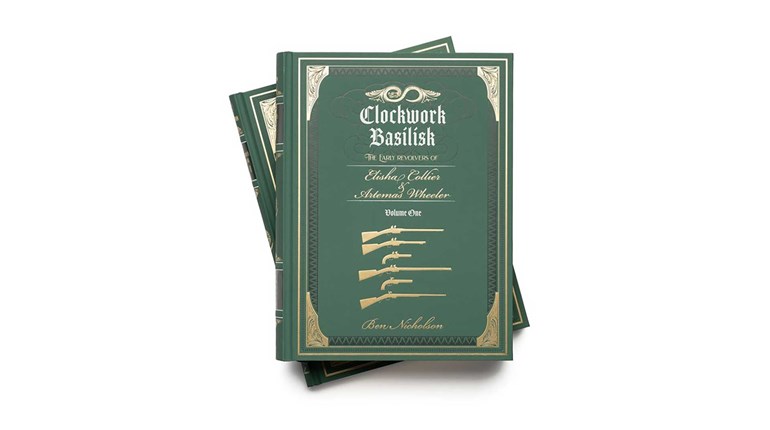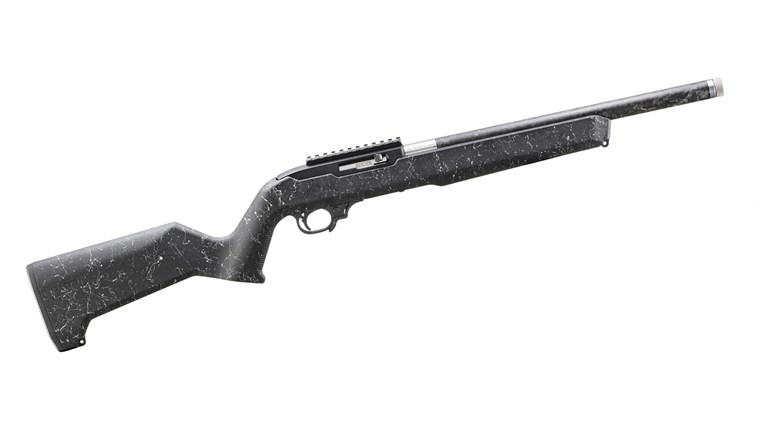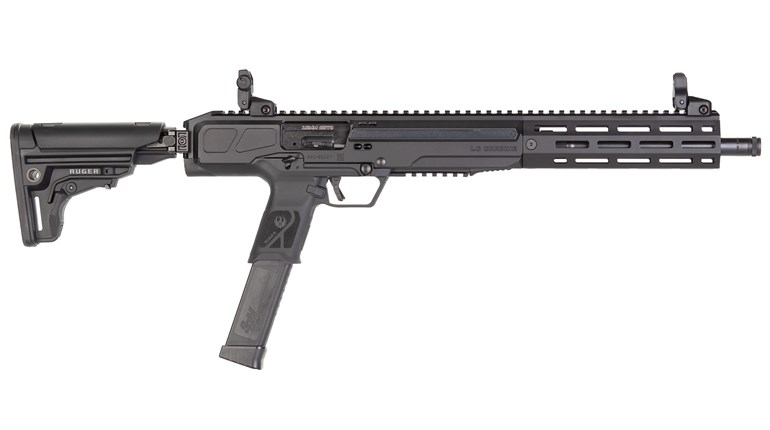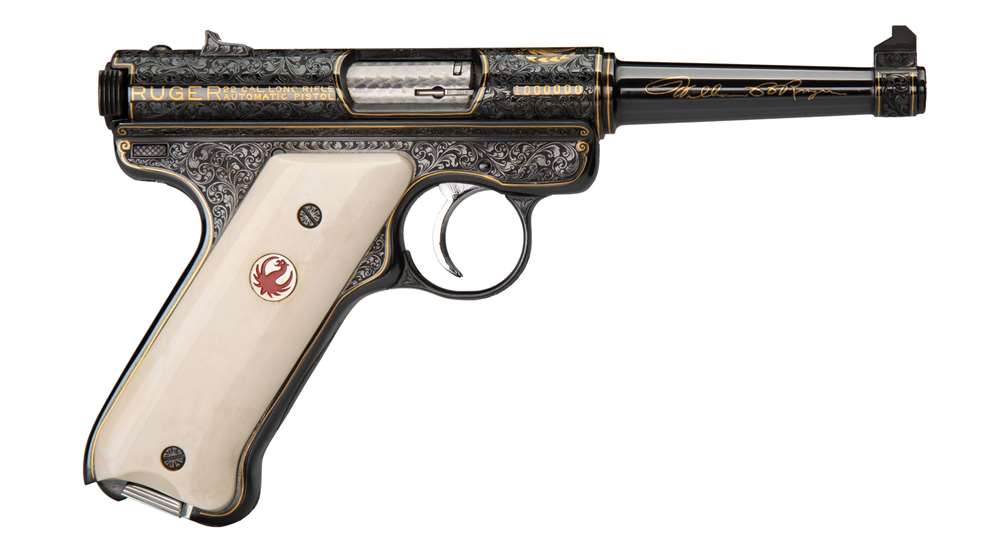
In a corner of one of the 15 exhibit galleries at the NRA’s National Firearms Museum in Fairfax, VA, is a small display case with a modified Savage 99 rifle. It left the factory as a lever-action rifle, much like the other one million Model 99s made during its 98-year run. This one is distinct in a way none of the others are: It is semi-automatic. In an article entitled “Semi-Automatic .250-3000,” published in American Rifleman magazine in the December 1943 issue, a 27-year-old William Batterman Ruger of Brooklyn, NY, wrote about converting this rifle to semi-automatic. It is the earliest-known Ruger firearm, and is on exhibit in the gallery that bears his name in the museum he was instrumental in creating.
The year 2024 will mark the 75th anniversary of the founding of Sturm, Ruger & Co. with the launch of the Standard pistol in 1949. Many Ruger aficionados are quick to credit GEN Julian Hatcher’s review of “this new gun” in American Rifleman as being the best press it could have received. It helped spur the sales of the $37.50 pistol to heights undreamt of by the two aspiring gun manufacturers, Bill Ruger and Alex Sturm. By 1980, more than one million units had been made, and nearly double that number have been made in the four decades since.
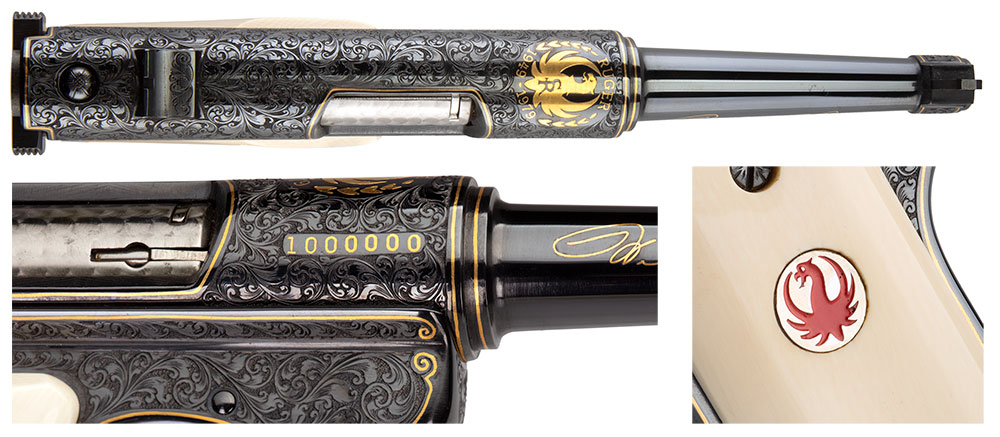
Bill Ruger had worked at the Springfield Armory and Auto Ordnance during World War II. His design of a new machine gun came about at the same time the war—and ordnance orders for new weapons—was winding down. Always interested in how things worked, he once took apart a grandfather clock and reassembled it to working order in one afternoon. At the age of 10, he acquired a Japanese “Baby” Nambu pistol souvenired in the South Pacific. He stripped it down and studied the intricate workings of its mechanism. With $50,000 from close friend Alex Sturm, Ruger was able to develop the .22 Standard pistol using numerous innovative techniques in its manufacture.
He introduced coil springs to the inner workings of the gun, which replaced the flat and “V”-shaped springs (which proved prone to breaking) in common use for centuries prior. He used two stamped-sheet metal halves that were welded together to form the frame, and the bolt was encased within that receiver so when the pistol was fired, the front and rear sights stayed stationary while the simple blowback design moved the bolt back and forth.
Initially offered at $37.50, it was priced well below the $60 Colt was charging for its venerable .22, the Woodsman. Manufactured in a dark blue with black, nitrile-rubber stocks, the distinctive canted profile of the grips gave it ergonomic handling that was similar to the P-08 Luger, one of the most desired souvenirs of the Second World War. The similar styling and rhyming name (Luger/Ruger) led many to think that the name and style of the gun was just a marketing ploy when in fact the name—as we all now know—was real, and the shape of the gun was actually inspired by the Nambu, not the Luger.
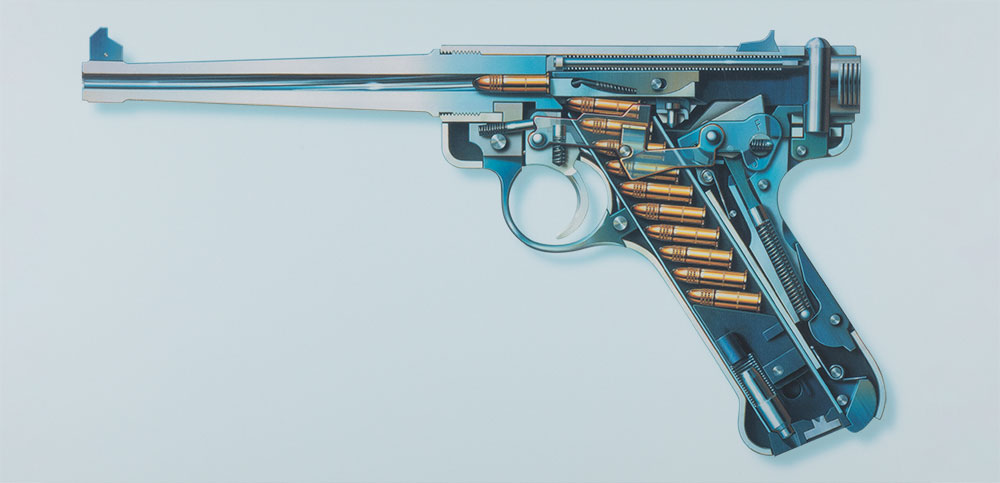
The first advertisement for the Sturm, Ruger & Co. Standard pistol ran in a 1949 issue of American Rifleman magazine. Orders were taken, but no checks or cash were deposited until enough orders were received to begin the manufacturing process in what was called “the little red barn” in Southport, CT. Sturm contributed more than just the seed money to start the company; he also designed the iconic Phoenix bird design that was colored red on a silver background and employed for the first few years of production. When Sturm passed away suddenly in 1951, a bereaved Ruger blackened in the logo out of respect for his business partner. Shipped in a “salt cod” wooden box, it was not long before the Standard pistol was outselling all other rimfire pistols on the market.
Since its introduction 75 years ago, the Standard pistol has been refined and offered in many configurations, from 4.75-inch plinking models to models with heavy barrels and target sights. The current Ruger catalog offers the MK IV pistol in eight configurations, with myriad options for each. We can only imagine what the next 75 years will bring to this venerable rimfire-handgun design.












